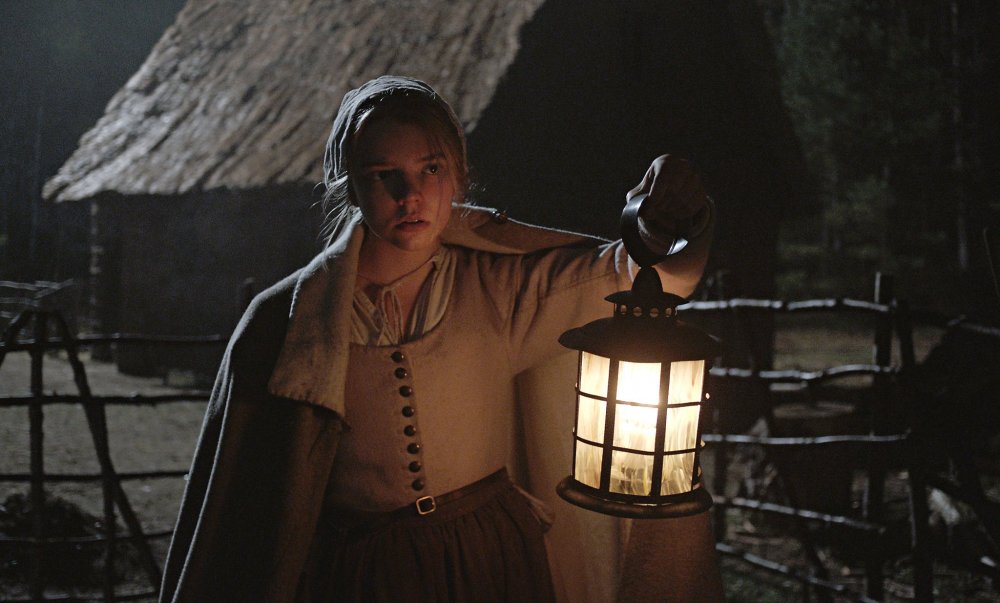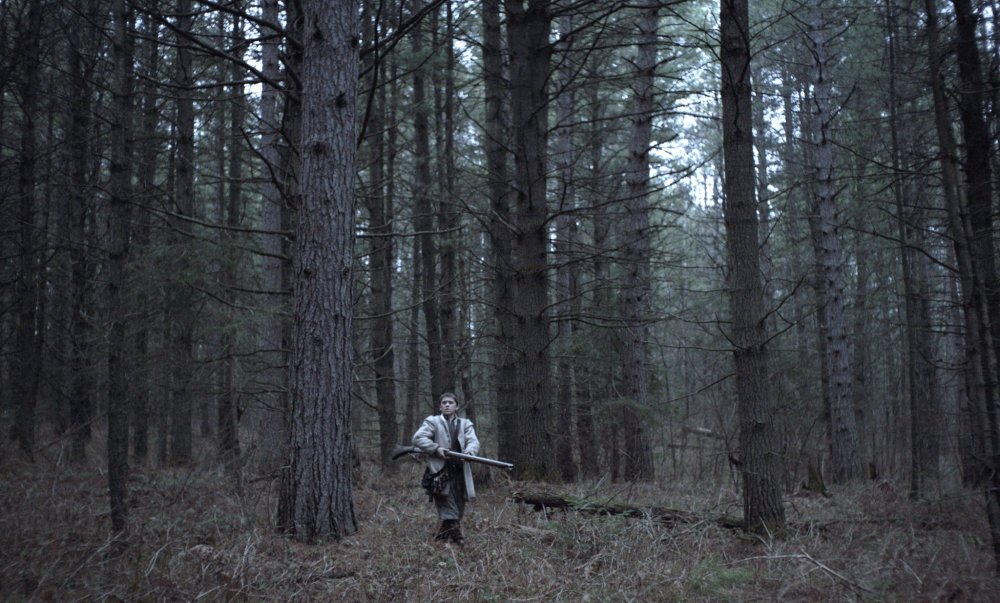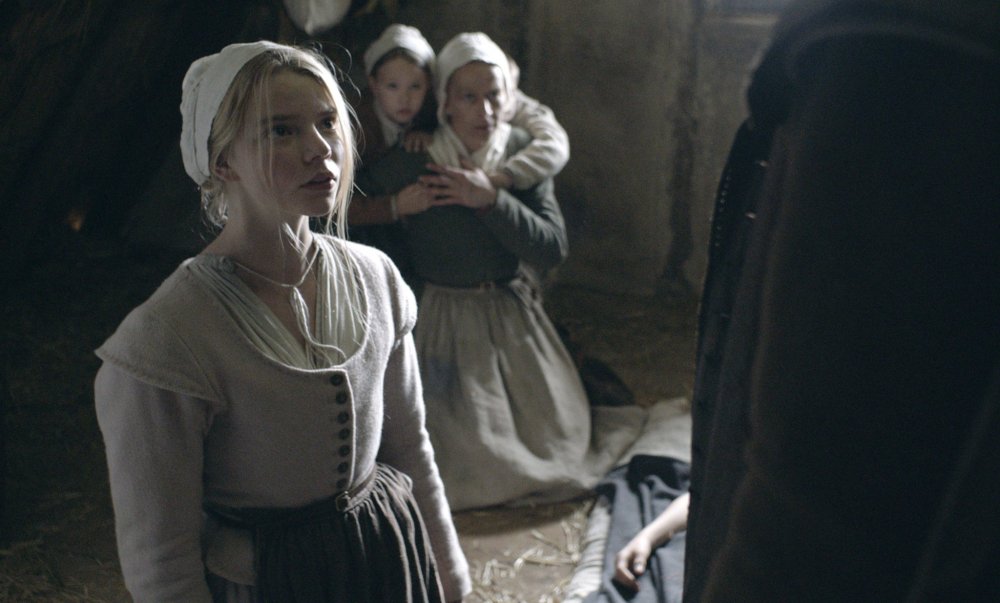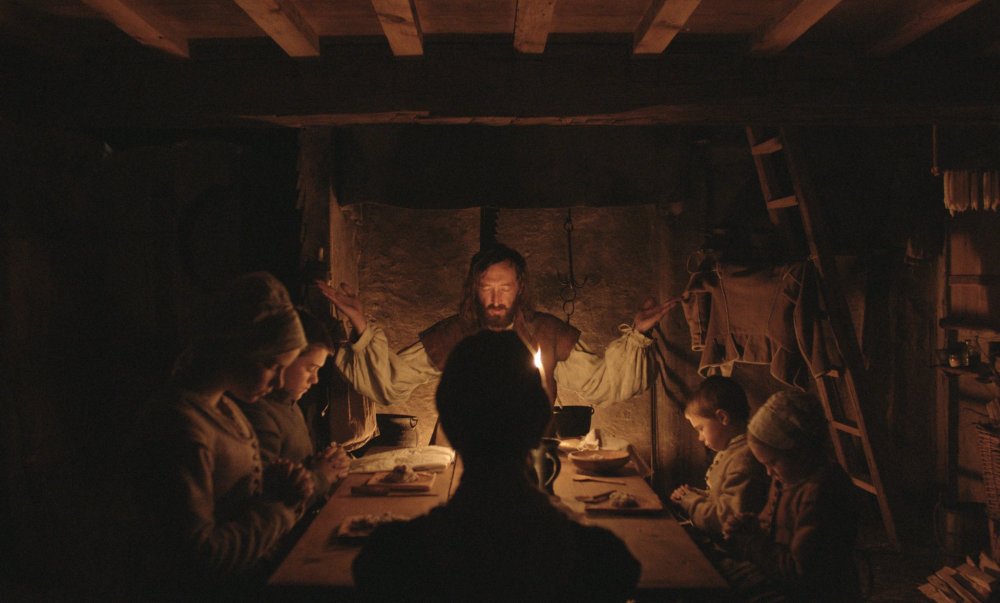In seventeenth-century New England, the excessive religious fervour of William (Ralph Ineson) leads to his excommunication from a Puritan plantation, along with his wife (Kate Dickie) and children. As the family, in agrarian exile by the woods, must face the mysterious disappearance of their youngest, failed crops, starvation and cabin fever, they become convinced that something Satanic is causing all their woes – and young Thomasin (Anya Taylor-Joy), whose uncontained adolescence represents a threat to the farmstead’s already fraying structure, becomes an easy scapegoat for demonisation.
The Witch is released in the UK on 11 March 2016. See thewitchmovie.co.uk.
Stripping the familiar horror trope of the demon-beleaguered ‘cabin in the woods’ right back to its folkloric, fairytale origins, Robert Eggers’ The Witch (subtitled ‘A New England Folktale’) marries a studied realism to a highly subjectified and rigorously period-appropriate surrealism. The results prove deeply unsettling – while also conjuring, through the echoes of history, a ghostly image of America today, where ideological extremisms can still engender their own alternative reality.
Eggers’ debut as writer, director, costume and production designer was the short film Hansel and Gretel (2007), which is silent, black-and-white, and expressionist – and of course features a witch. For his second short, The Tell-Tale Heart (2008), he adapted Poe through puppetry. And now his feature debut The Witch is set in 1630, and privileges in-camera trickery and practical effects over voguish CGI to create its dread. Which is to say that, in terms of both source material and filmmaking techniques, Eggers is all at once a respecter and a preserver of the past. So when I interviewed him during last year’s London Film Festival, we began by discussing his obsession with history.
Robert Eggers: As [our culture] becomes more and more secularised, these days the films that are asking interesting questions about humanity are, I think, science fiction films. Everyday life is perfectly fine, but I get enough of it every day, and I want to go explore another world.
But I’d rather sit in a carriage than in a space ship. For me, the voices of the dead are a lot louder, and I’m interested in exploring who we are by going backwards. I wanted to make this archetypal New England horror story, and so the research really led my hand to what the film would eventually be.

To the devil a daughter: Anya Taylor-Joy plays Thomasin, a young woman accused of witchcraft in New England in 1630
I did most of the witch-y research on my own. There’s a fantastic guy, Jim Baker, who is both an expert in early colonial America but also witchcraft, who read several drafts of the script and was extremely helpful. We were working with museums, and readers in the field of English seventeenth century agricultural life.
I find there’s a connection there. I’m from New England and these kinds of stories were part of the imaginary playground and consciousness of my childhood. Without sounding like a New Age crystal worshipper, you can feel something there, in these old dilapidated colonial farms and hidden graveyards in the middle of a pine forest. I certainly did as a kid. So going through all this hoopla to create or seemingly recreate the past, it’s like being with your ancestors – however complicated and occasionally despicable and genocidal they may have been. There’s something important about that, for me.
The location and sets in your film look horrifically miserable. What was it actually like working there?
It was pretty miserable. The location was extremely remote, and there was no infrastructure. All the money went on screen, no cell service, no wifi. Not enough toilets. It was a really hard shoot – 25 days, which was not long enough for what we were trying to do.
And we would tie the schedule in knots to try to keep it gloomy. The sun would come out, and everyone was in despair. And there were the animals’ and the children’s hours. The cast was remarkable, and we had such a great chemistry: it was a really incredible experience working with them. The crew was great as well, but the cast was a little sheltered from the horrors.
The Witch has been likened to a horror film, but is also a gothic study of faith and patriarchy, akin to say The Devils (1971), or even The Village (2004) – and at times it feels almost like a documentary account of the harshness of seventeenth century life in America. How would you characterise your film?
I wanted this film to be like a nightmare from the past, like a Puritan’s nightmare that you could upload into the mind’s eye. And it’s a folktale.

Certainly classifying it in the realm of, like, you’ve got to buy a ticket and see it, it’s a horror movie, but I think also good fairytales and folktale are always family dramas, and a family drama is the most interesting drama. This is what we’re always living out, in our lives, with all of the relationships that we have, and there’s a reason why Lear and Hamlet tend to be considered the finest Shakespeare plays. There’s a reason why [it’s] “Luke, I am your father”, not “Luke, I am some guy”. And in the complex dynamics of this family within this cabin-fever situation, all this Freudian stuff is brewing up and then exploding – and exploding in Jungian ways.
On one reading your film concerns a God-fearing family driven by loss, superstition, religious hysteria, privation and paranoia to conjure their own demons and engineer their own Fall – with the witch and devil existing only in their imaginations. Yet it is also possible to take the film at face value as a Satanic tale of evil triumphant. In other words, your film neatly straddles the divide between rationalism and religious fundamentalism in America’s current culture wars. Is this just coincidence, or was it your intention to use a historical story to comment on the tensions of the present?
While I don’t want to tell people how to watch the movie – I hope that people can see it to be ‘Yes both’, in a way. Because for me, certainly between fundamentalism and rationalism, I don’t really care what the answer is, and I think again, ‘Yes both’.
Metaphysical truths are complicated, because we don’t think witches fly on broomsticks today: that’s not true, that’s bullshit, science can prove that’s not happening. But in the seventeenth century, that was true, so – I know this sounds a little whackadoodle, but I think that things can exist in the society that believes in them. So who knows in a few hundred years what people will think of us? If theories on archetypes are correct, you don’t need to search for a modern way in, because these archetypes are part of us, part of our fabric.
But I think that the thing that is speaking the most for me is how the shadows of the past in the repression of feminine power and fear of feminine power and the dark feminine in the male-dominated society in the early modern period, how – even though that is a thing of the past – those shadows still exist today. If there was something on my conscious mind in this, it’s those themes.
Is there a sense in which you are seeking to explore the origins of cinematic horror, and how it has emerged from the foundation myths of America’s early colonial period?
Yeah, exactly. It’s called The Witch, a little bit implying: this is what a motherfucking witch is, guys. Because the witch was always something for me that was scary, and somehow I had the idea that this archetypal witch lived there in my nightmare world, but in a way that was unexplored.

So in doing the research I was able to figure out why this stupid plastic Halloween decoration was such a thing – like, why were all these women being burnt? It wasn’t something that just lived in the minds of the clergy and the intelligentsia – it was everybody. The lay people had this idea of the fairytale-witch-ogress-anti-mother-really-fucking-scary-thing. To do the research and to see that the fairytale world and the real world in the early modern period were the same thing, and to find the same tropes in folk tales and fairytales and recorded accounts of historical witchcraft and in court records – it’s the same witch. But it’s real for these people. If your corn doesn’t grow, it’s a witch. If your child dies, it’s a witch. And there is a reality to it. The little old lady who lived down the lane in this period, people really thought she was flying on a broomstick and cutting up children, it wasn’t like she’s a witch in some vague sense, there was a specific fairytale mythology built around her, and people would be very frightened of her, so if you think that that’s how they’re actually viewing this woman, you can see how it could lead to this kind of horror.
One Elizabethan witch that I read about was on trial for giving children poisoned apples before any recorded accounts of Snow White that I’m aware of. And there’s another Elizabethan witch who was famous for running around in a little red riding cloak with a hood, and so this fairytale imagery is part of the reality of life then.
So then, what are these consistent tropes? Those go in the film. What are the ones that speak most personally to me? Those are the ones that are like weird crazy half-forgotten things that somehow make my heart beat faster, and I don’t even know why – things having to do with animals and agriculture, and things that are further away from everyday experience in the twentieth century, for most of us in the western world. But yeah, we’re not so far removed from that – somehow weirdly, with these animals in the film, it works for people.
Several of your characters, confronted with the mystery and misery of the American wilderness, struggle to map out the values and iconography of the Old Testament onto their New World. Is this struggle, this conflict between religion and nature, between wild reality and the all-too-human attempt to comprehend and order and narrativise it, your central theme?
The Puritans were very interested in it. It’s incredible to read these sermons, and to hear these two conflicting ideas of how they’ve come to a new Canaan or they’ve come to a new Jerusalem, but then they’ve stayed within the hedge. They had this really complicated, dissonant relationship with nature. We had to increase the design of the windows in our film by 33 per cent to get more light in – the real windows were so tiny, because they wanted to keep nature out.

There was a guy, one of the first guys who left Plymouth plantation to build a farm outside, he wanted to build a giant palisade around his whole property to keep out the wolves and the native people. He actually gave up because it was such hard work, but that relationship was something that they were very conflicted and confused by.
Certainly in Catholic countries, the peasantry have always found ways to integrate pagan things in a way that makes it a little bit easier just to be a human being. I don’t want to be too critical about a belief system, but dogmatic medieval Christianity was definitely, you know, when you really follow the dogma – there’s the guys who saw the light, like Martin Luther and St Francis and Joachim of Fiore – but then other people like Augustine and Calvin were, like, motherfuckers [laughs]. The more you try to turn away from darkness, the more darkness is right against your back.
In the April 2016 issue

Roger Clarke reviews The Witch as one of our films of the month:
“Apparently Satanists love this unique film, and so, one expects, will Christian fundamentalists. Yet rationalists need not despair. There is something for them too in the Russian doll of stacked illusions. Are there environmental hallucinogens at play here?”
-
Sight & Sound: the April 2016 issue

Tom Hiddleston and the cast and crew of High-Rise talk class and violence past and future – and the rise of cinema’s Ballardian worldview....
-
The Digital Edition and Archive quick link
Log in here to your digital edition and archive subscription, take a look at the packages on offer and buy a subscription.






